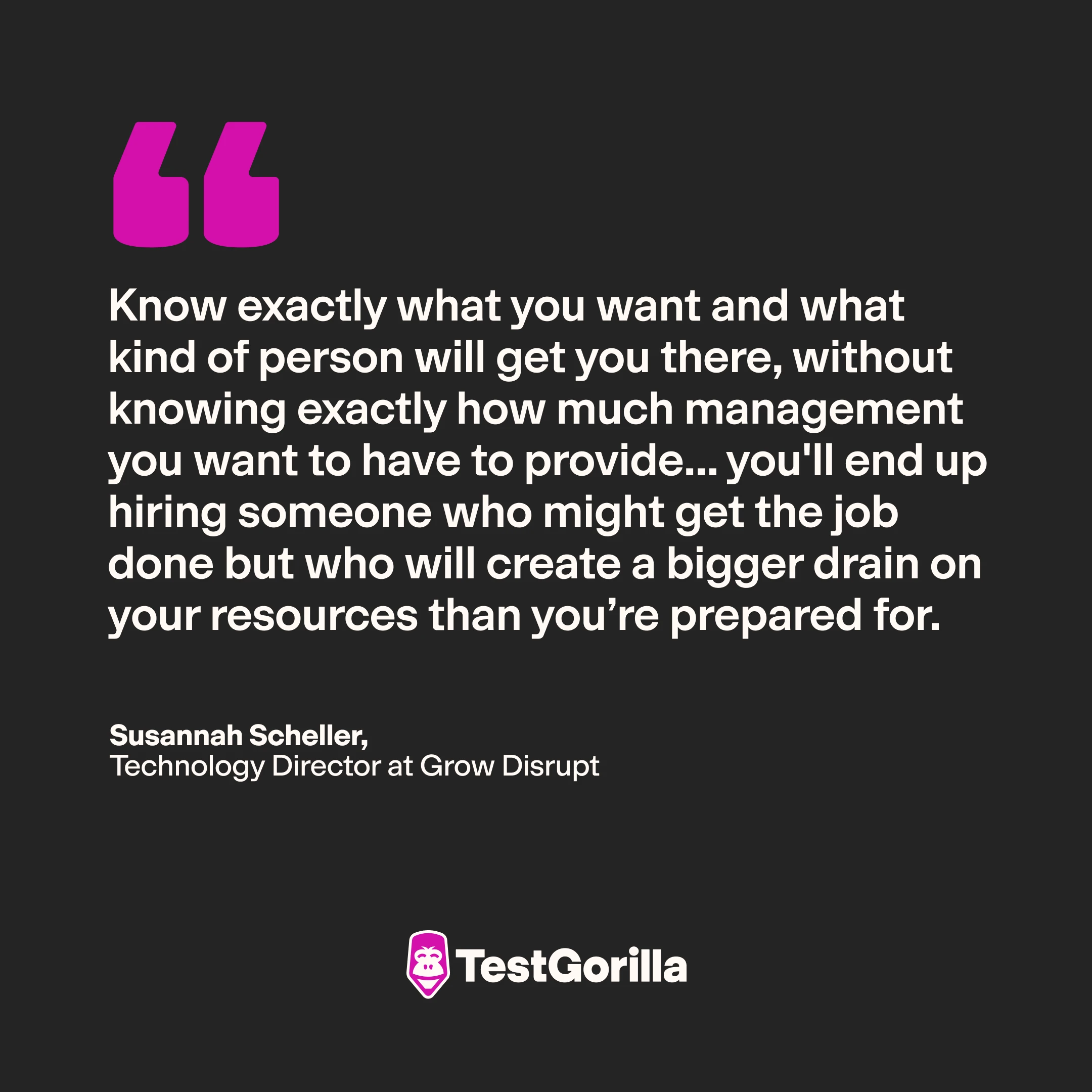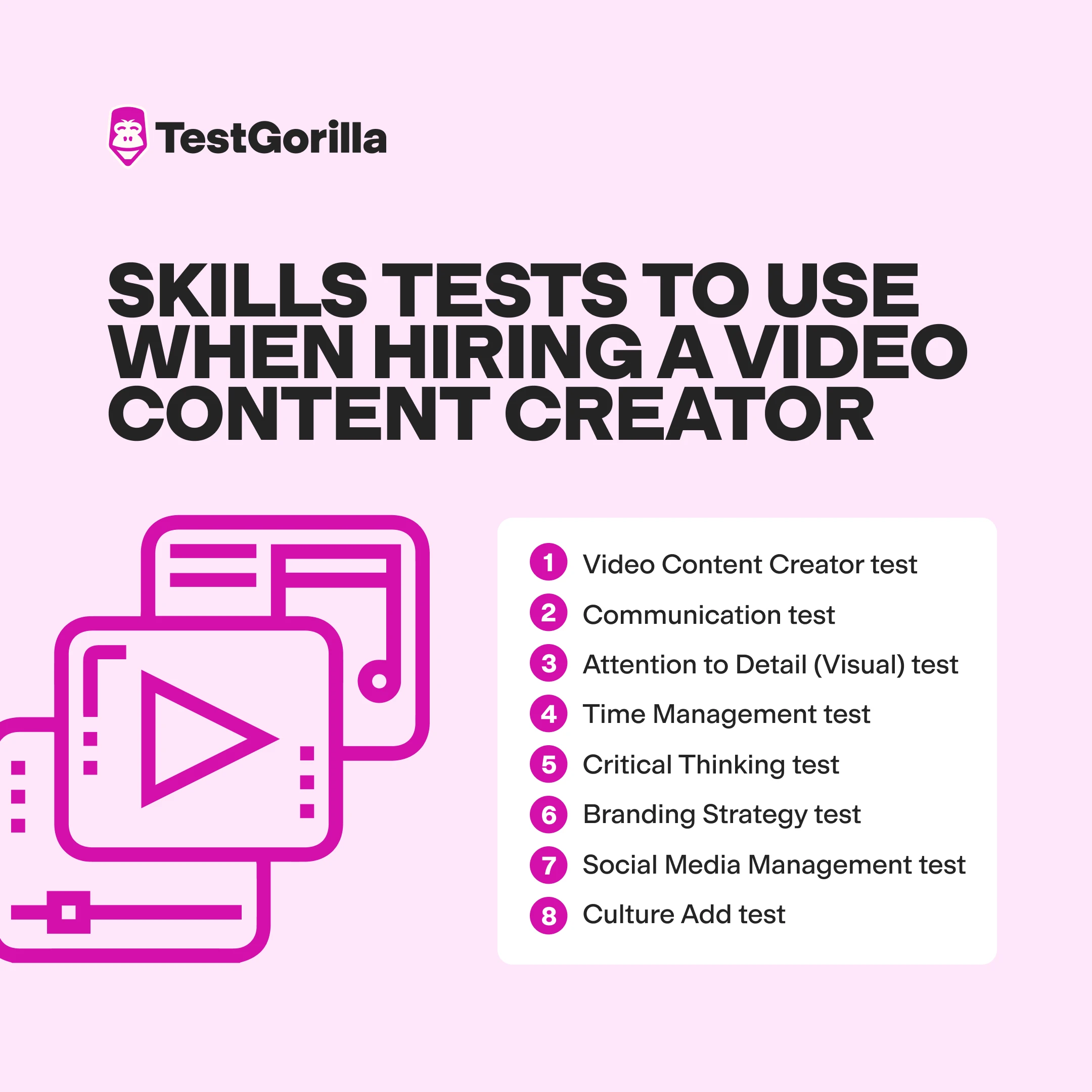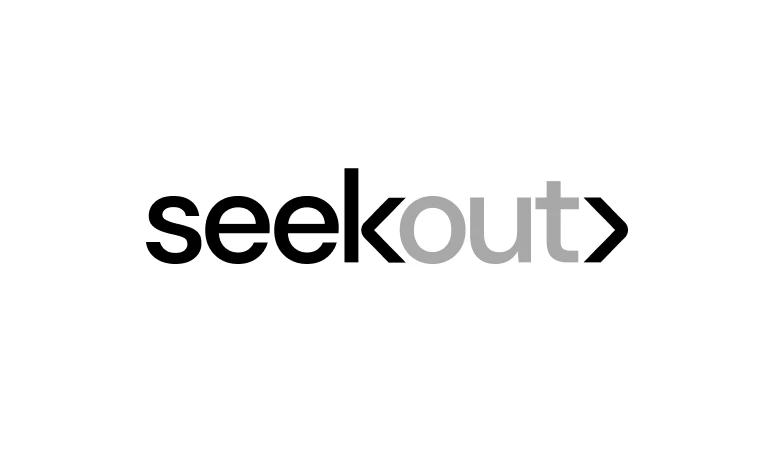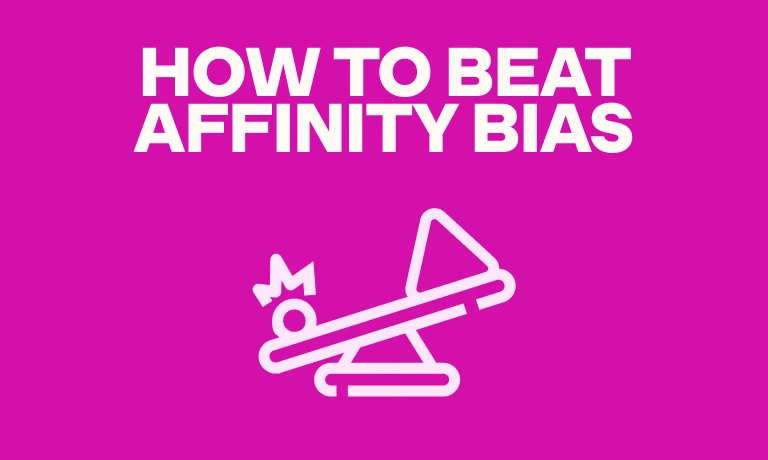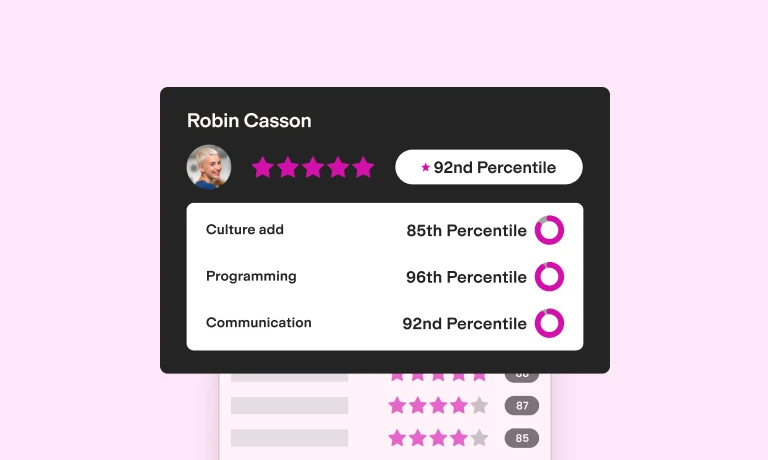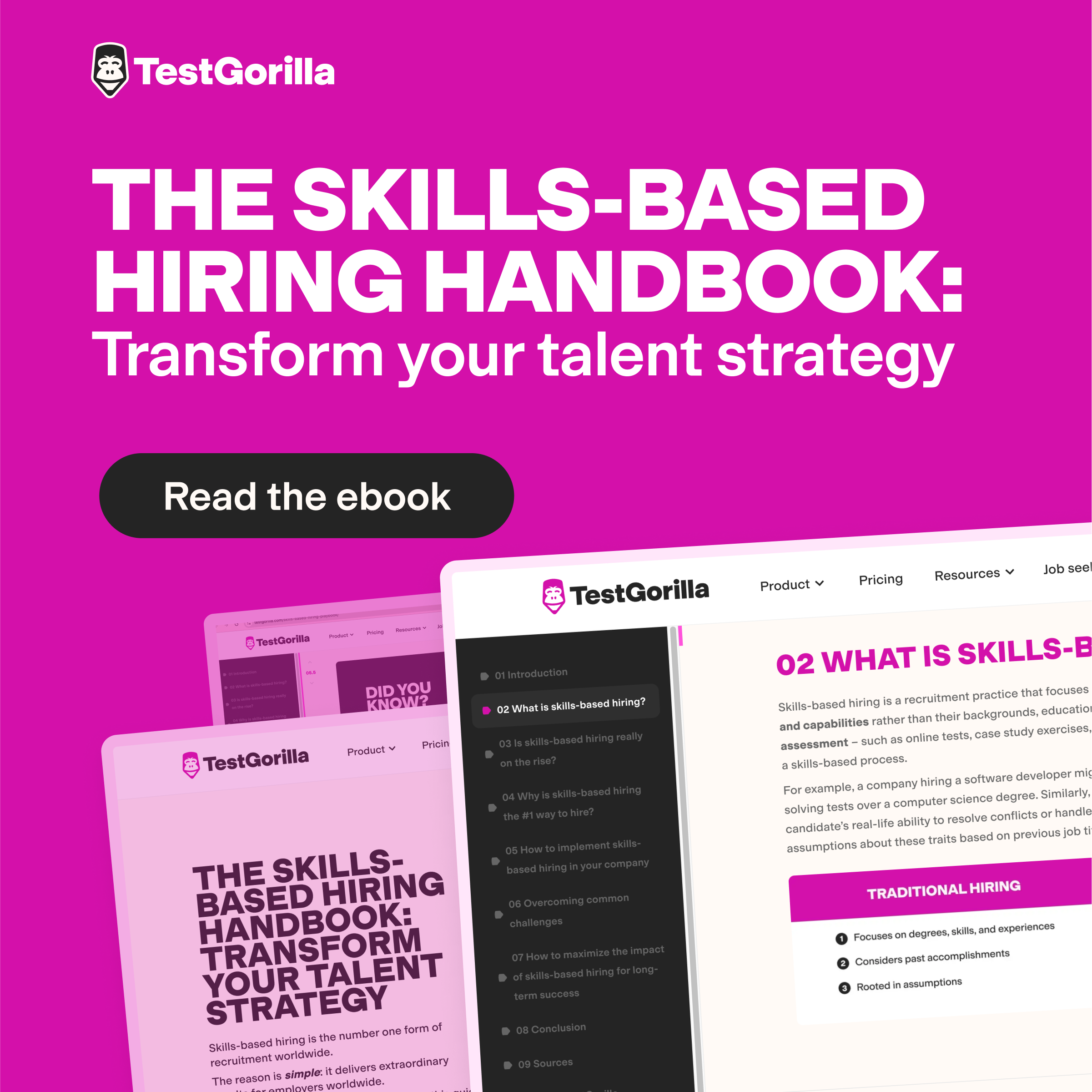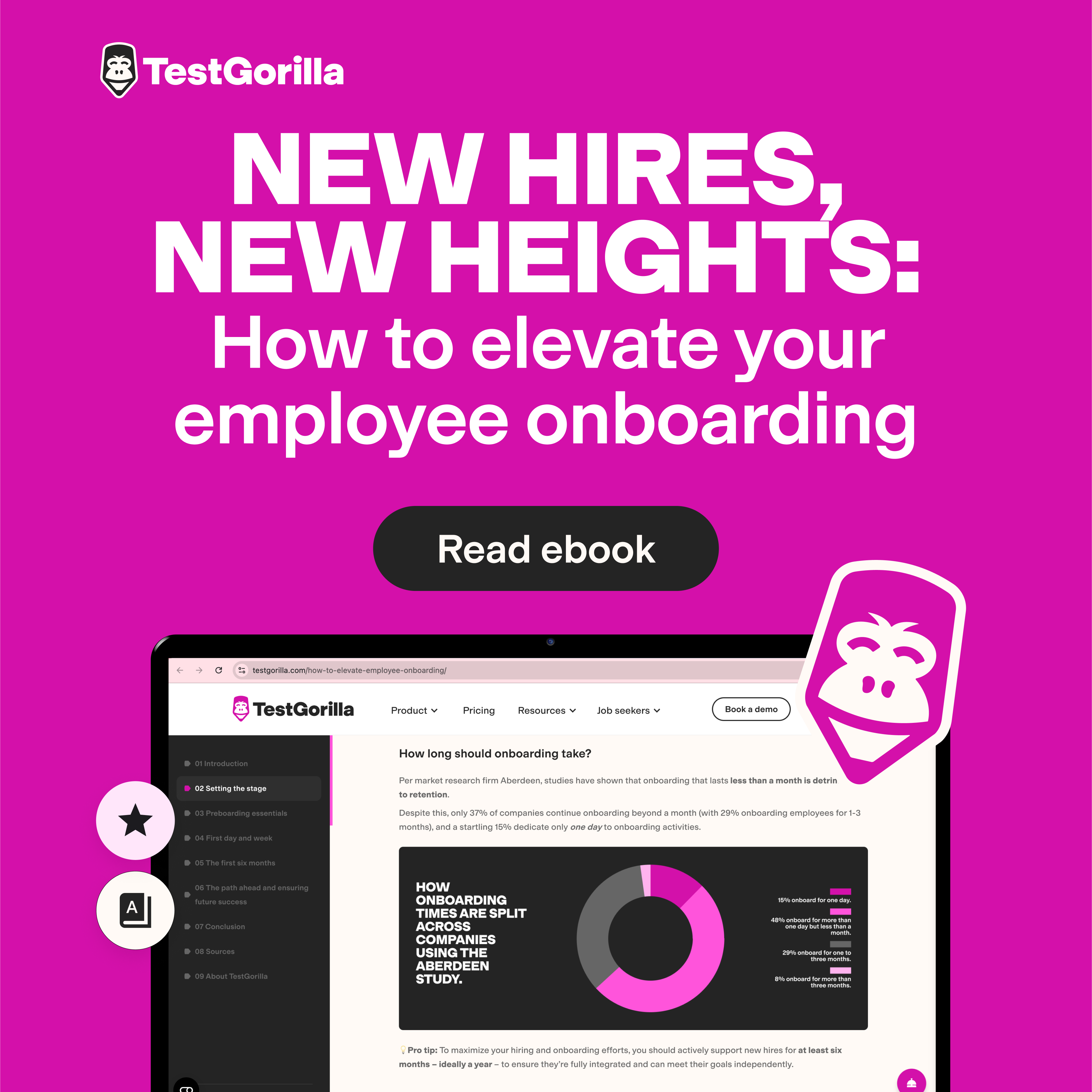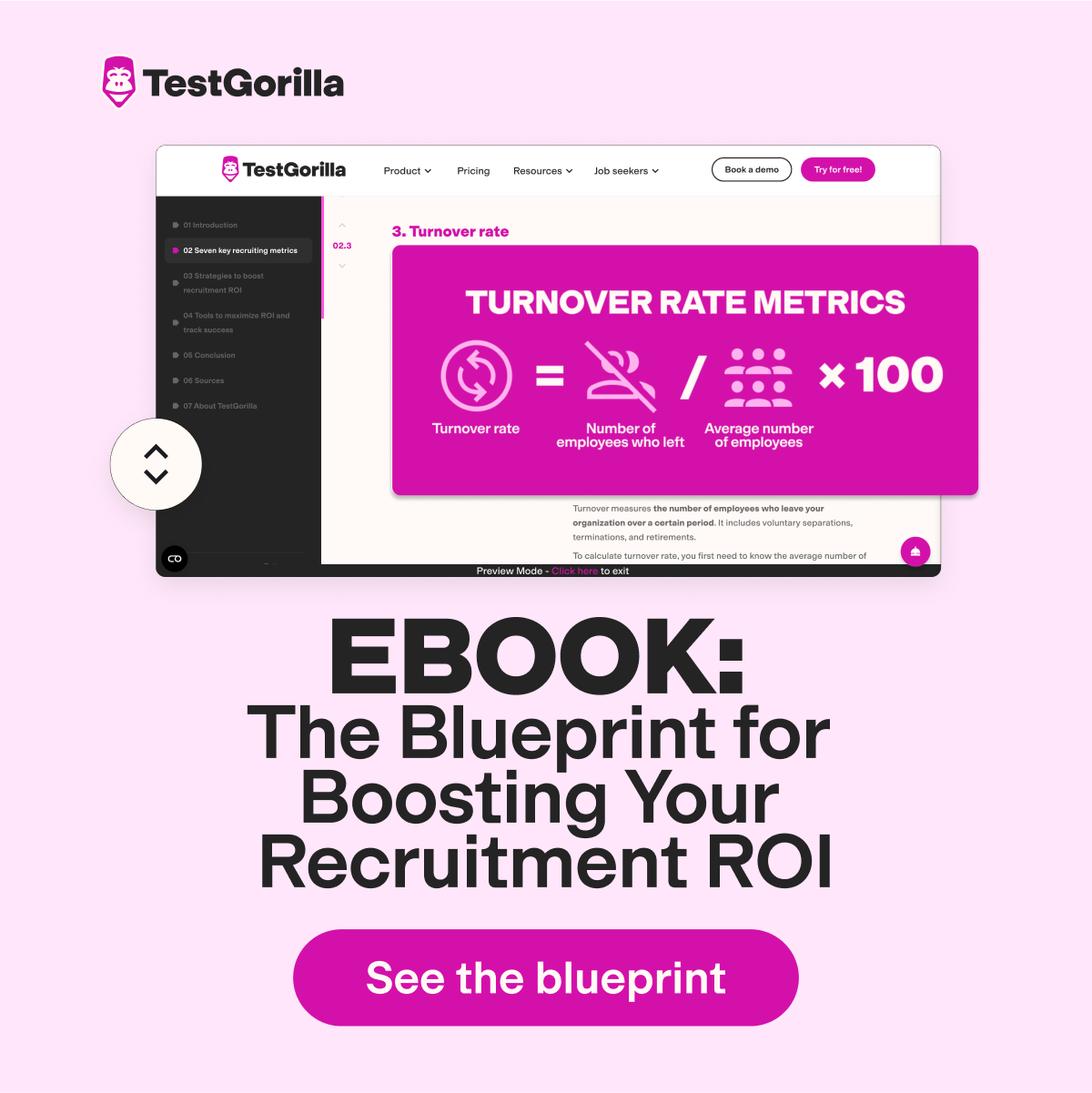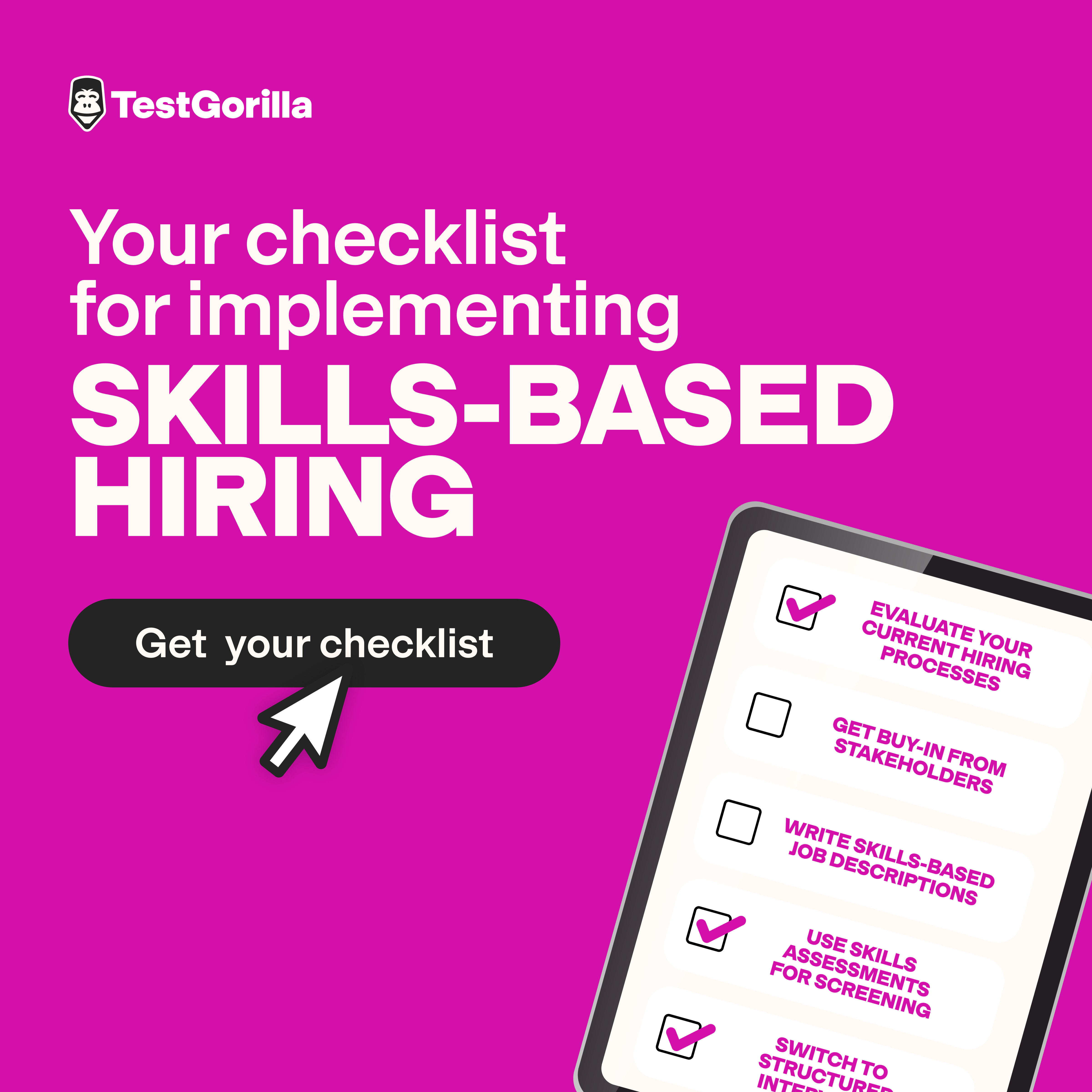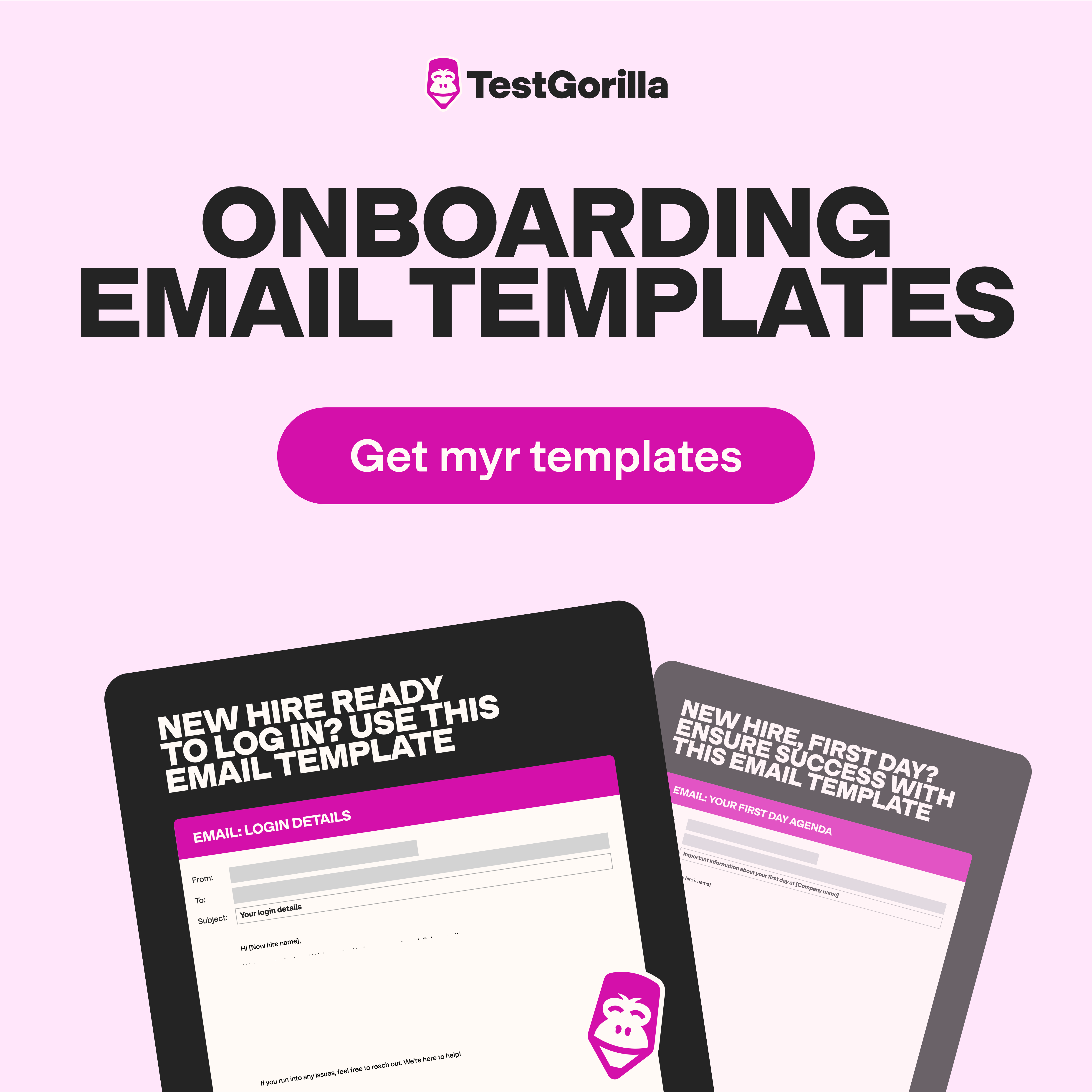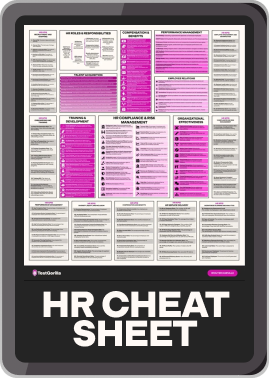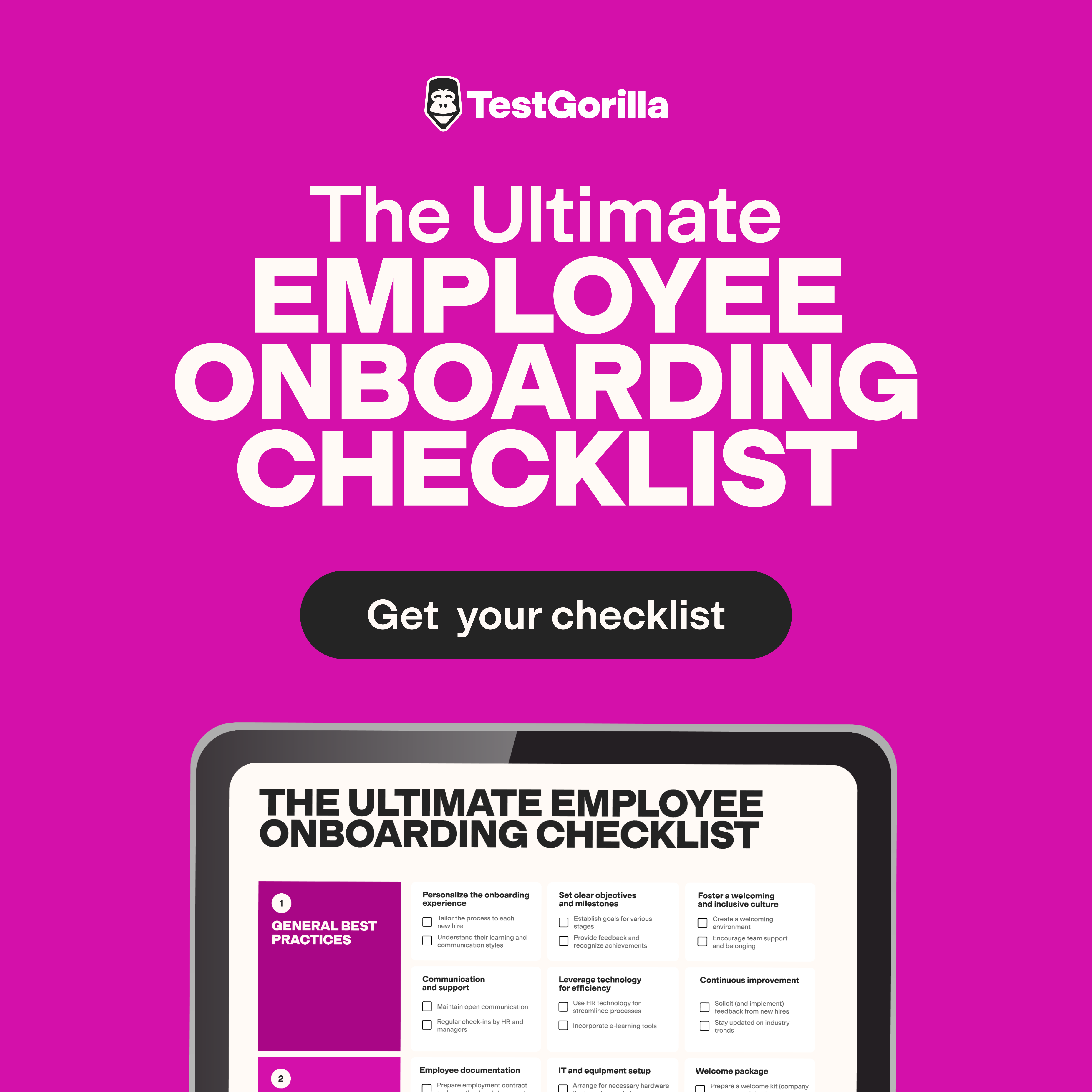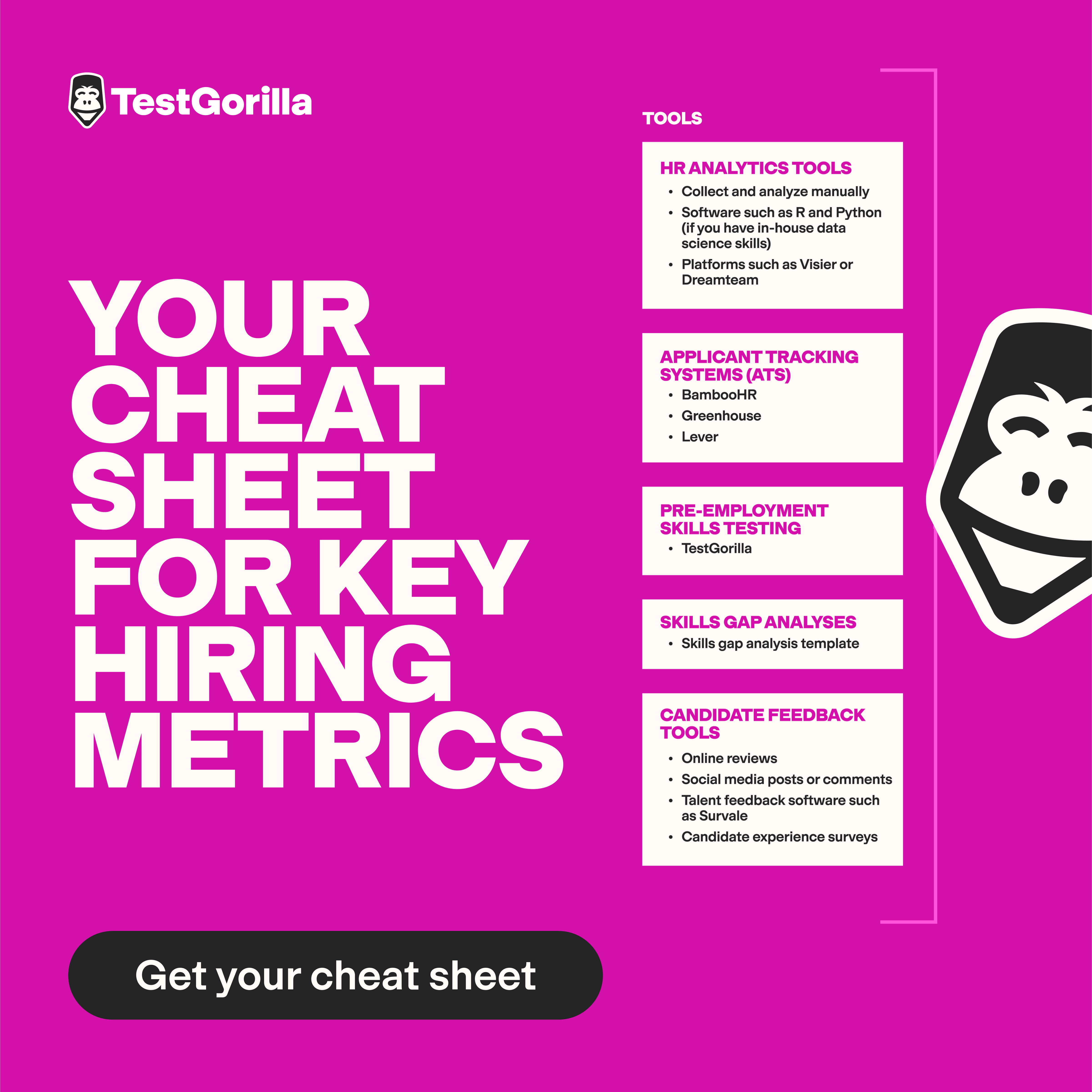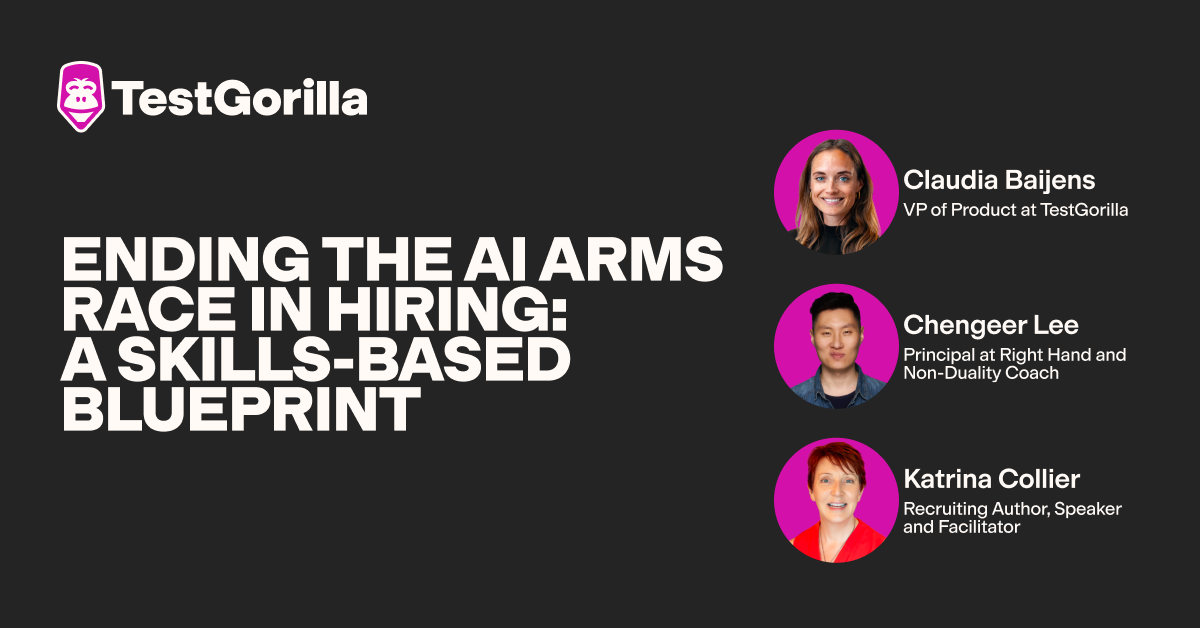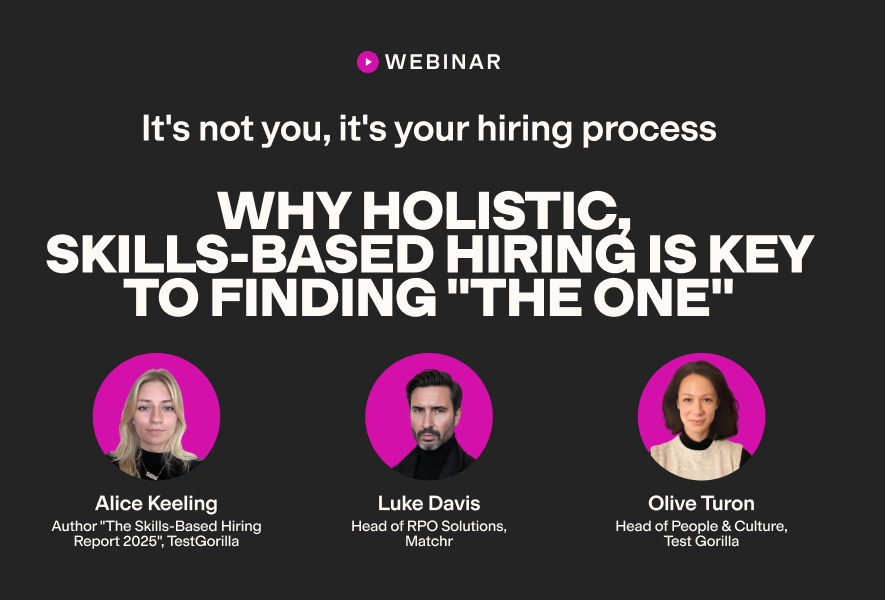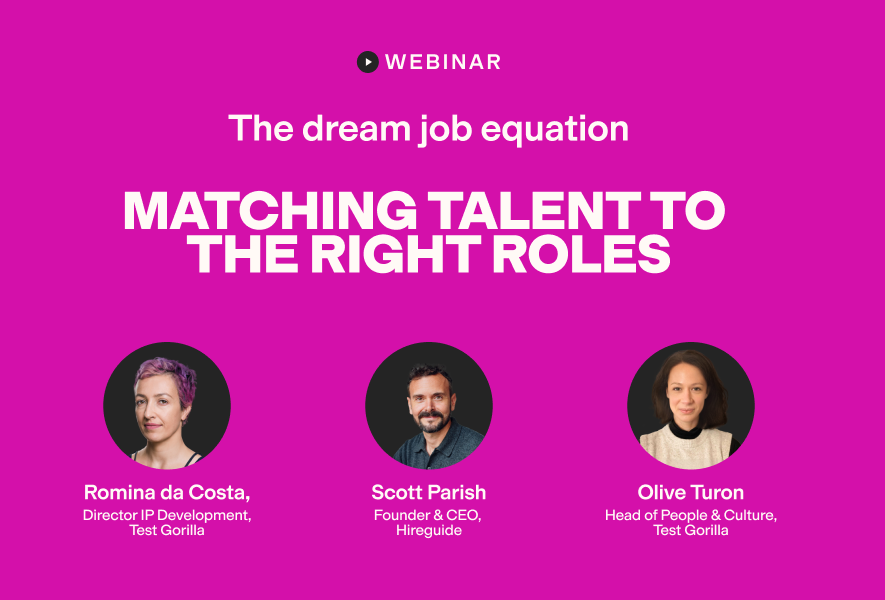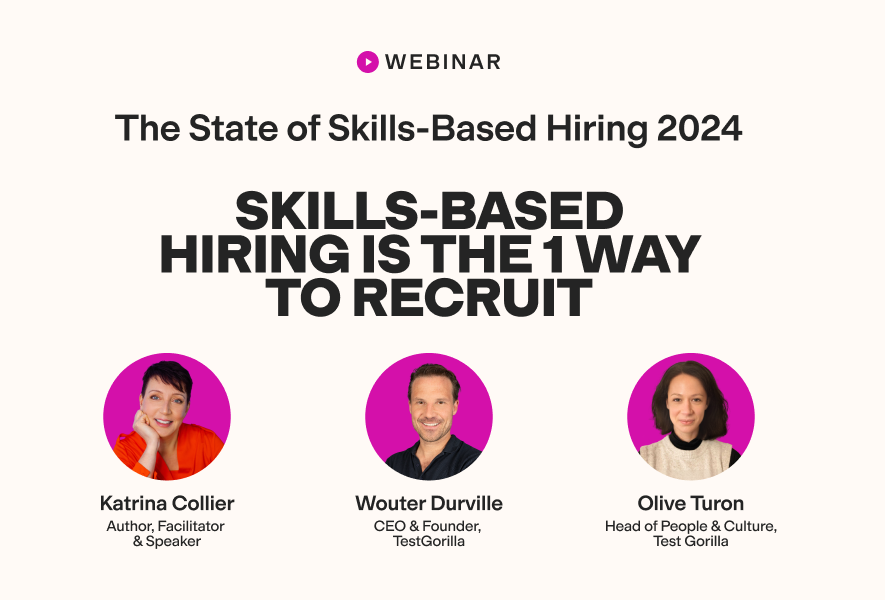How to hire a content creator who can produce high-performing video content
You've embraced video on LinkedIn and your website, in product walkthroughs and customer stories. It’s how your brand connects, explains, and grows.
But hiring someone to create that content consistently? That's where things get tricky. “Video content creator” can mean anything, and portfolios can be misleading – they’ll look fantastic until you realize the candidate didn’t run the shoot or shape the story.
If you’ve hired the wrong person before, you know the cost: wasted time, delayed campaigns, and content that doesn’t perform.
We’re here to help you avoid that outcome.
This guide shows you how to hire smarter, from going beyond traditional recruitment sources to using talent assessments like our Video Content Creator test and more.
What makes a strong video content creator
Strong video content creators live at the intersection of three worlds: technical execution, creative storytelling, and marketing awareness. They don’t just shoot and edit – they think in systems, outcomes, and experiences.
They bring a quiet, intentional approach to the work. They know a product launch video can’t be approached the same way as a TikTok soundbite. They understand what your audience expects on various platforms and adapt accordingly.
The best ones show up prepared. They ask thoughtful questions, adapt when things go off-script, and always keep the viewer in mind. What will make someone stop scrolling? What’s worth cutting? That’s the creative edge that rarely shows up in a portfolio but changes everything on the job.
Why traditional processes fall short when hiring video content creators
When we surveyed employers for our 2025 State of Skills-Based Hiring Report, 63% said it’s tougher to find strong candidates now than it was a year ago. But this isn’t just a talent issue – it’s a sign that traditional hiring tactics, such as resume screening and portfolio reviews, simply aren’t enough for modern jobs.
This is especially true when hiring for video content roles. Here’s why old-school methods fall short:
Titles don’t mean much. “Content creator” is a broad label. Two candidates might carry the same title, but one’s a skilled editor who works entirely in post-production, while the other’s great on-screen but struggles with structure.
Portfolios rarely provide context. You might see impressive visuals, but did they lead the project, or just follow instructions? Were they working solo, or executing someone else’s creative vision?
You can’t leave this to guesswork or assumptions. As Chris Mitchell, Founder and CEO of Intelus Agency, warns, “I’ve seen companies hire creators who churn out beautiful content… that totally misses the mark for the target audience.”
Creative judgment is hard to assess on paper. You’re hiring for taste, pacing, and brand fit – none of which show up on a resume.
Rushing the hire only worsens the problem. When timelines are tight, it’s tempting to prioritize speed over depth. But a mis-hire doesn’t just slow the project. It drains energy, budget, and confidence, while the campaign falls behind. |
The best insights on HR and recruitment, delivered to your inbox.
Biweekly updates. No spam. Unsubscribe any time.
How to hire a stellar video content creator
If traditional hiring methods don’t work, how do you find a video content creator with the skills to succeed today? You need to rethink the process from the ground up. Let’s walk through it together.
1. Clarify what you actually need
Before writing the video content creator job description, step back and map out the true scope of the role. Are you replacing static social media posts with videos? Building a YouTube channel from scratch? Creating product demos for sales? Each scenario demands a different mix of creative, technical, and strategic skills.
“Know exactly what you want and what kind of person will get you there,” Susannah Scheller, Technology Director at Grow Disrupt, tells TestGorilla. “Without knowing exactly how much management you want to have to provide... you'll end up hiring someone who might get the job done but who will create a bigger drain on your resources than you’re prepared for.”
Consider the operational side as well. Content creation involves not only creativity but also timelines, file handling, production software, and delivery formats. Someone producing polished, long-form content will work differently from someone optimizing native social videos in fast cycles.
You should also think about the freelancer-to-full-time pipeline. Many of the best creators start as freelance content creators because freelancing helps them build versatility, client management skills, and creative flexibility that often outpaces in-house experience.
Finally, match your expectations to your budget. A creator who scripts, shoots, edits, and manages content strategy will cost more than someone focused on execution alone. Being honest about scope and investment up front avoids misalignment later.
2. Look beyond the usual platforms to find top talent
Most recruiters and hiring managers default to LinkedIn, but that isn’t where video creators showcase their work. Look for candidates where video actually lives:
Vimeo for polished work
Behance or Dribbble for creative portfolios
TikTok or Instagram for platform-specific expertise
You’ll also find great talent on freelance platforms like Upwork, Fiverr, and Contra. Each has its pros and cons, so expect to do a bit of digging. The best creators will not only list their services but also explain their process, share client outcomes, and demonstrate their ability to communicate clearly about timelines and briefs.
One content creator shared their hiring journey on Reddit: "I found my current gaming editor on LinkedIn and I pay him $1800 a month to produce 3 lightly edited videos a week... The Fiverr editors were extremely overpriced and didn't deliver on the requests I asked for." The lesson? Quality creators charge appropriately for their work and deliver consistently.
Creator communities are another great recruitment channel. Reddit forums like r/videography and r/editors, Discord groups, and niche Slack channels can surface talent you won’t find on job boards.
And don’t overlook referrals. Ask other marketers, agencies, or creators you follow. The video content world is smaller than it seems, and strong talent often spreads through word of mouth.
3. Know the skills that matter
Great video content creators combine technical know-how with creative instincts. And they do it under pressure, on deadline, and across evolving formats. If your hiring process doesn’t reflect this balance, it’s easy to overlook standout talent or get misled by flashy edits.
Start with technical execution. Most teams don’t have the luxury of a full post-production crew. That’s why solid technical fundamentals are essential. And audio, more than anything else, makes or breaks a video. As one creator shared:
“No one wants to watch a video if the audio is crappy… I uploaded a video I thought was very good, but I messed up the audio again… now I have to look back on where I went wrong.”
That kind of reflection isn’t rare. Viewers will forgive shaky footage or basic lighting. But they’ll click away if the sound is off. Skilled creators know how to balance mic volume, voice, background music, and platform-specific compression.
They also bring skills in color correction, lighting consistency, and file optimization that help content look polished and load fast, even at scale.
But technical skills are only half the equation.
“The technical side is the easiest part… especially with a gajillion video tutorials on YouTube. How to key a green screen, exposure settings, export formats; it’s all a click away,” a Redditor shared.
What’s harder to learn is creative thinking. The same commenter added, “A lot of tutorials focus on the technical side because it’s easy to teach… It’s much harder to teach creativity. Storytelling, rhythm, timing—there are no absolute answers… That’s where people struggle.”
This is where judgment comes in. Knowing when to hold a shot or when to cut is a learned instinct. It shows up in how a creator builds momentum, structures transitions, or paces content for a 30-second promo versus a 3-minute explainer.
The best creators think in platform-native ways. They design for retention on YouTube, quick attention on TikTok, and clarity on LinkedIn. They also factor in engagement metrics that each platform prioritizes – watch time, completion rates, caption readability, and more. They don’t just assemble clips. They craft experiences that perform.
Ultimately, you need both. Technical polish alone doesn’t cut it. And creative flair, without the ability to execute, can fall flat. Another one added to the argument:
“Doesn’t matter the ratio of creativity to technicality; you definitely need both… If you’re extremely creative but lack even the basic technical understanding to convey your ideas, then how useful are you? Equally, if you know everything technical but lack the creative mindset… what good are you to anyone?”
This is why titles and portfolios often mislead. A “video content creator” might be great on camera, or behind it, or just decent at both. Portfolios might showcase beautiful work, but you won’t always know if they led the project or simply followed instructions.
You need a way to assess both the how and the why: how they execute, and why they make the choices they do. That’s what separates the ones who just make content from those who make it work.
4. Measure must-have skills with talent assessments
Talent assessments are the most effective way to objectively evaluate video content creators’ skills, and a platform like TestGorilla can help you use them quickly and easily.
The key? Use them at the first stage of the hiring process, after application submissions and before interviews. That way, you’ll focus further resources on only the candidates who’ve proven their skills.
TestGorilla lets you combine up to five tests into a single, role-specific assessment. Instead of testing everything, focus on the mix of skills that reflect your real needs.
Say you’re hiring someone to manage your brand’s video content across YouTube, LinkedIn, and TikTok. They’ll need to plan and script ideas, edit with consistency, and understand what drives engagement on each platform. They’ll also need to manage feedback loops, shifting timelines, and multiple campaigns at once.
In this case, you might start with the Video Content Creator test to assess core production skills. Add the Communication test and Attention to Detail (Visual) test to see how clearly they explain decisions and spot inconsistencies.
To ensure they can interpret your tone and style, the Branding Strategy test can be a strong signal. And if deadlines are tight, the Time Management test helps evaluate how they organize and prioritize their work.
This kind of setup gives you a real view into how candidates think and create. It moves you from guesswork to clarity.
→ You can check our test library for more assessments or check out our expert tips for assessing video content creation skills.
5. Use behavioral interviews for extra insights
At TestGorilla, we believe interviews are a necessary part of hiring, but they need to be structured. Pair them with skills assessments and use targeted behavioral questions to gain deeper insight into how candidates think, solve problems, and collaborate.
What do we mean by “targeted behavioral” interview questions? It’s simple: questions that focus on past behavior and real-world scenarios.
You’ll want to ask questions that reveal how candidates approach creative challenges; how they handle feedback, pressure, and change; and how they think about audience, brand, and business goals.
Instead of asking a long list of one-off questions, structure the interview around two or three key areas like feedback, brand alignment, or creative pivots. Ask for real examples, dig into the why and how, and listen for clear thinking and ownership.
This helps you go beyond surface-level answers and see how candidates connect their choices to business goals.
→ Want more? Check out our complete list of video content creator interview questions.
6. Try trial tasks to see candidates in action
As the icing on the cake, consider asking candidates to complete a brief trial task. This can help you evaluate how candidates interpret your direction, balance creativity with structure, and communicate under light constraints.
But don’t ask for a full video. Instead, give a short brief and ask for an outline, script idea, or editing approach. And make it realistic – use similar timelines, constraints, ambiguity, and expectations they’d face on the job.
When evaluating tasks, here’s what to check:
Do they ask clarifying questions about the audience and goals?
How do they prioritize when they can't do everything?
Do they explain their creative choices in business terms?
Are they comfortable with ambiguity, or do they need excessive direction?
Hire your next video content creator with confidence
The best video content creators aren’t always the ones with the flashiest reels. They’re the ones who understand your audience, adapt to each platform, and create content that performs.
To find them, you need a hiring process that reveals how candidates think, create, and collaborate under real conditions.
Start by using talent assessments to uncover the creative and strategic skills that matter most – platform knowledge, brand alignment, storytelling, technical execution, and adaptability.
When you pair that insight with structured interviews, you’re not just filling a role – building a team that creates with purpose.
Want help building your assessment process or rolling it out with your team? Sign up for a free account or schedule a free demo with TestGorilla today.
Related posts
You've scrolled this far
Why not try TestGorilla for free, and see what happens when you put skills first.


